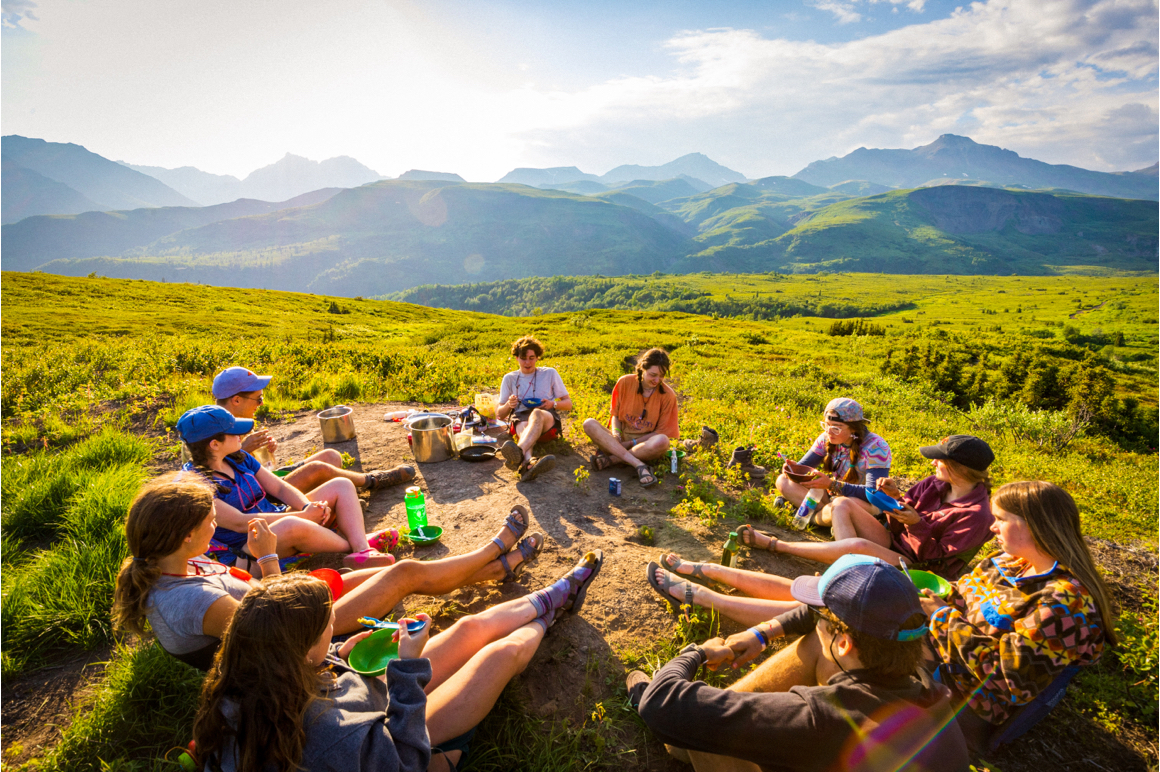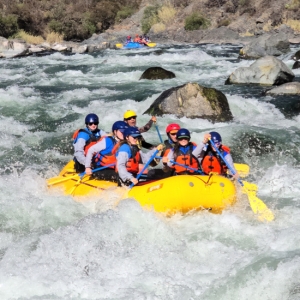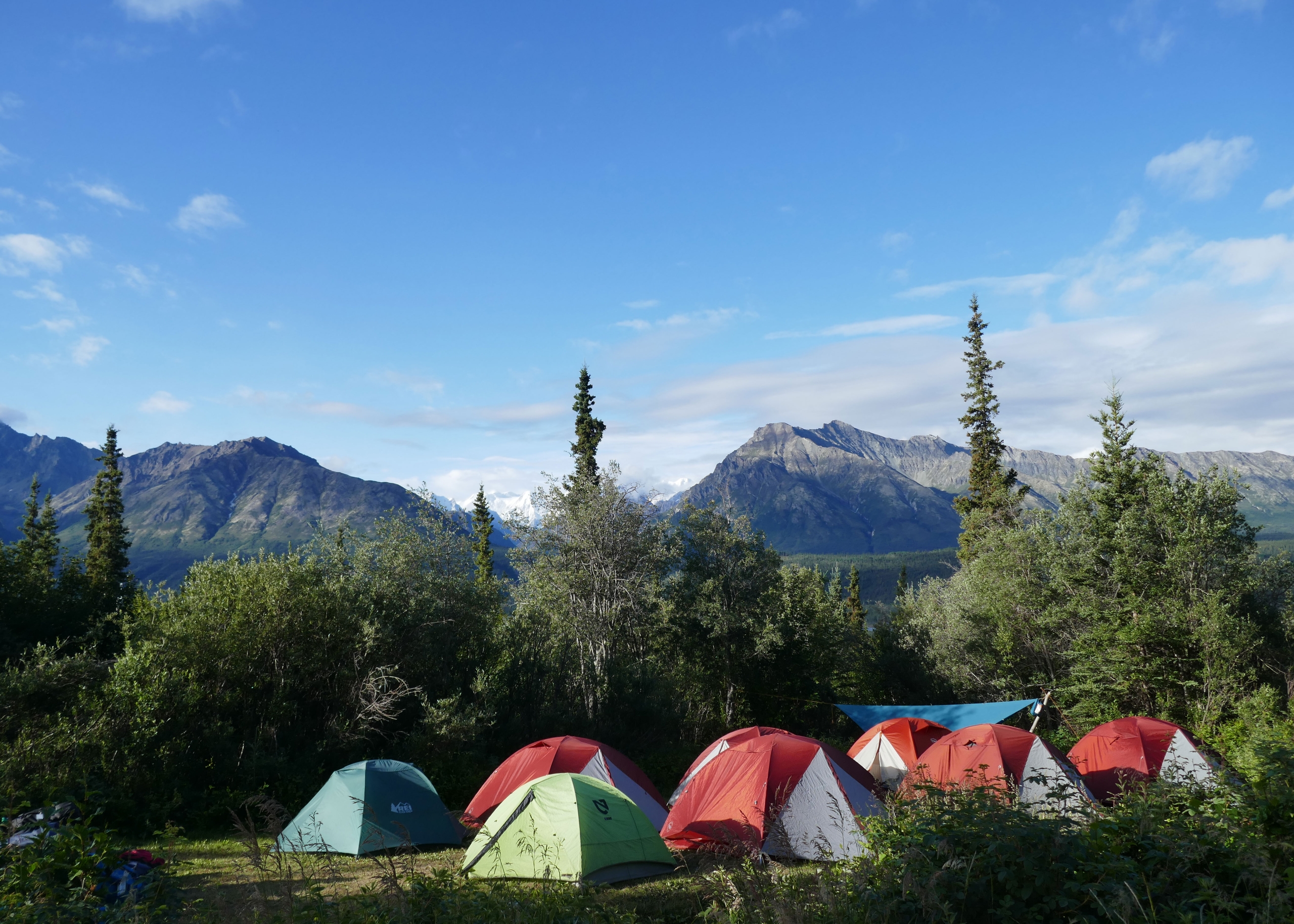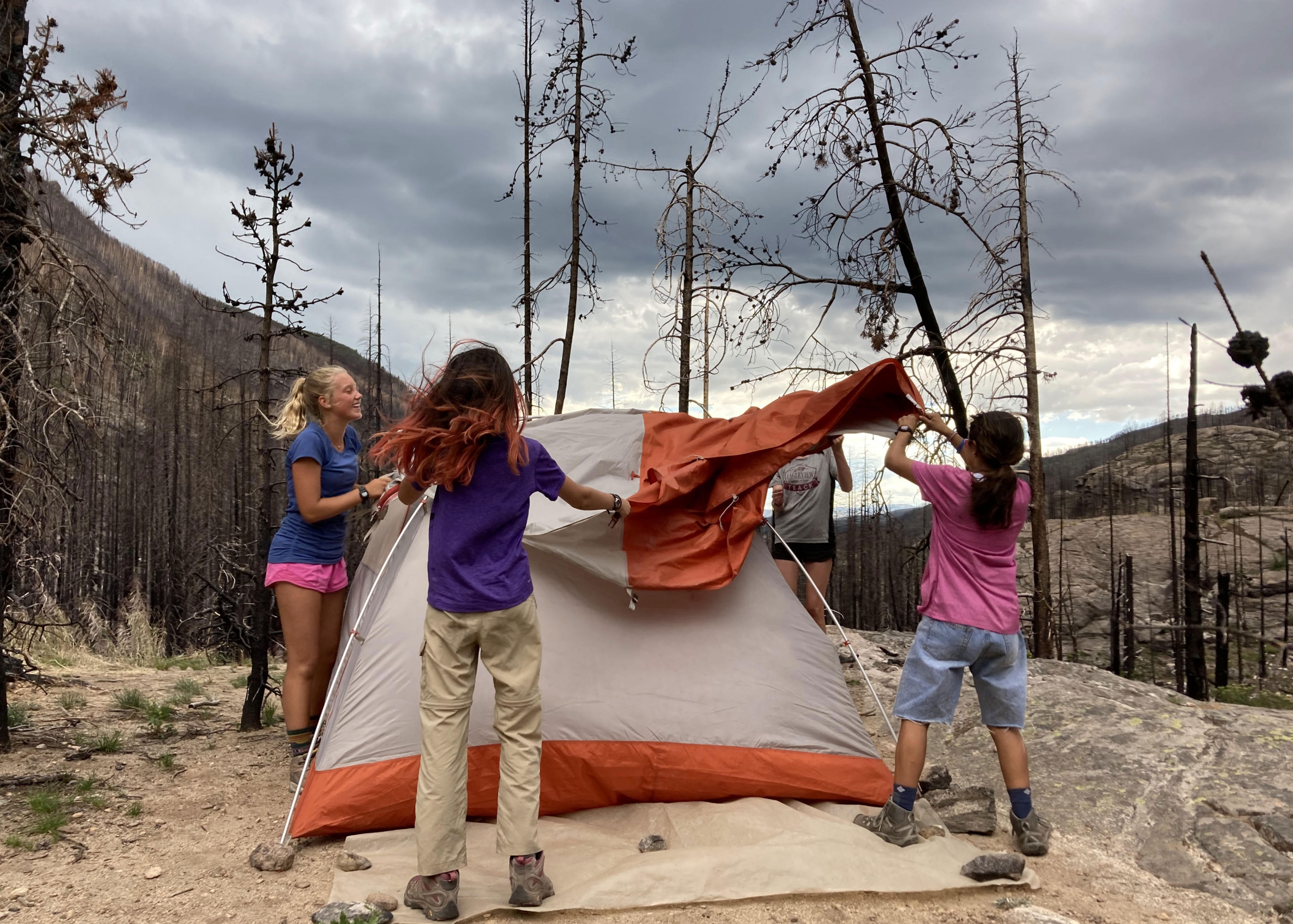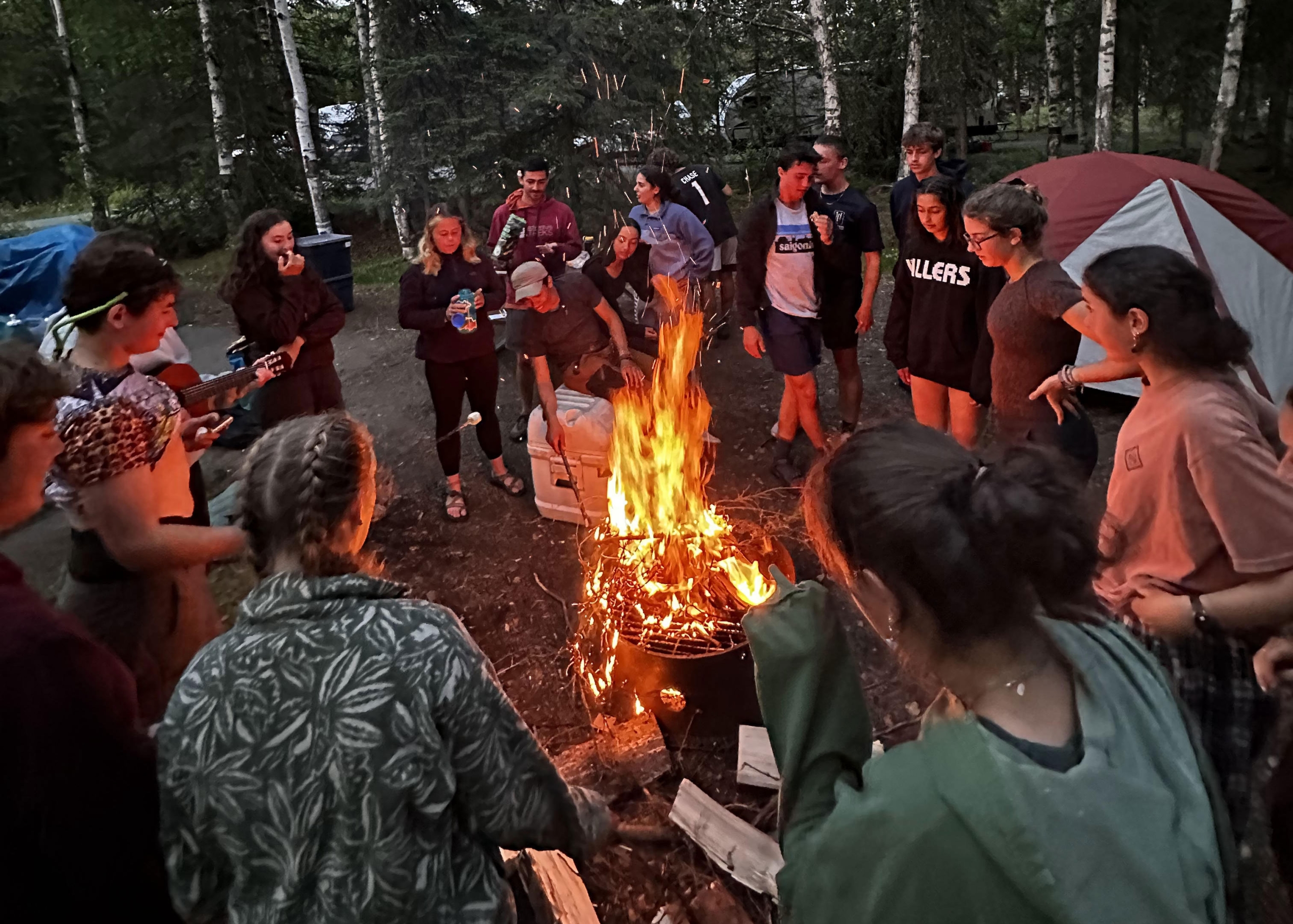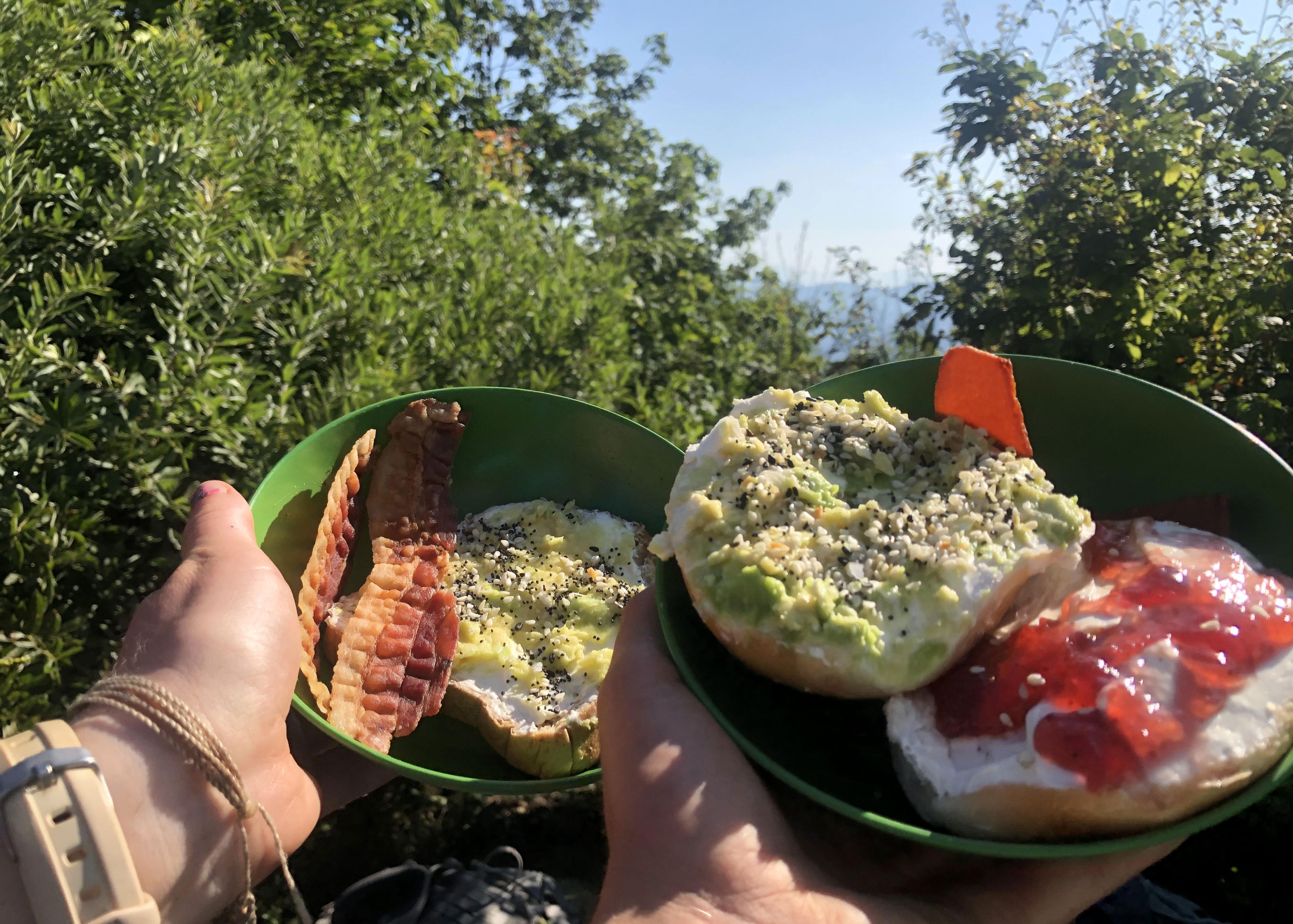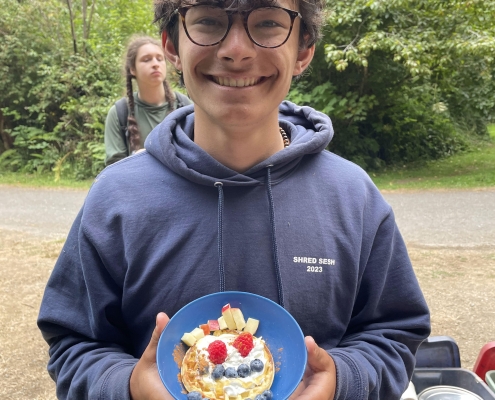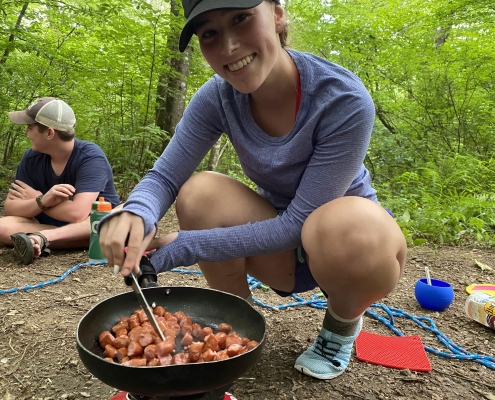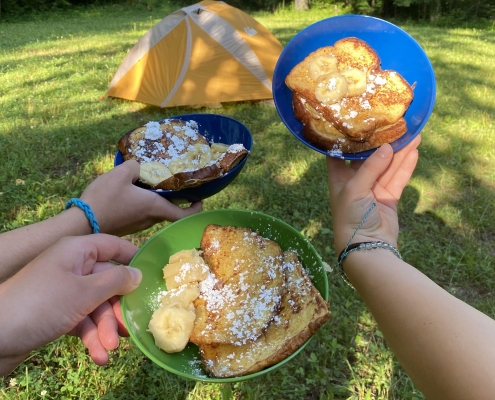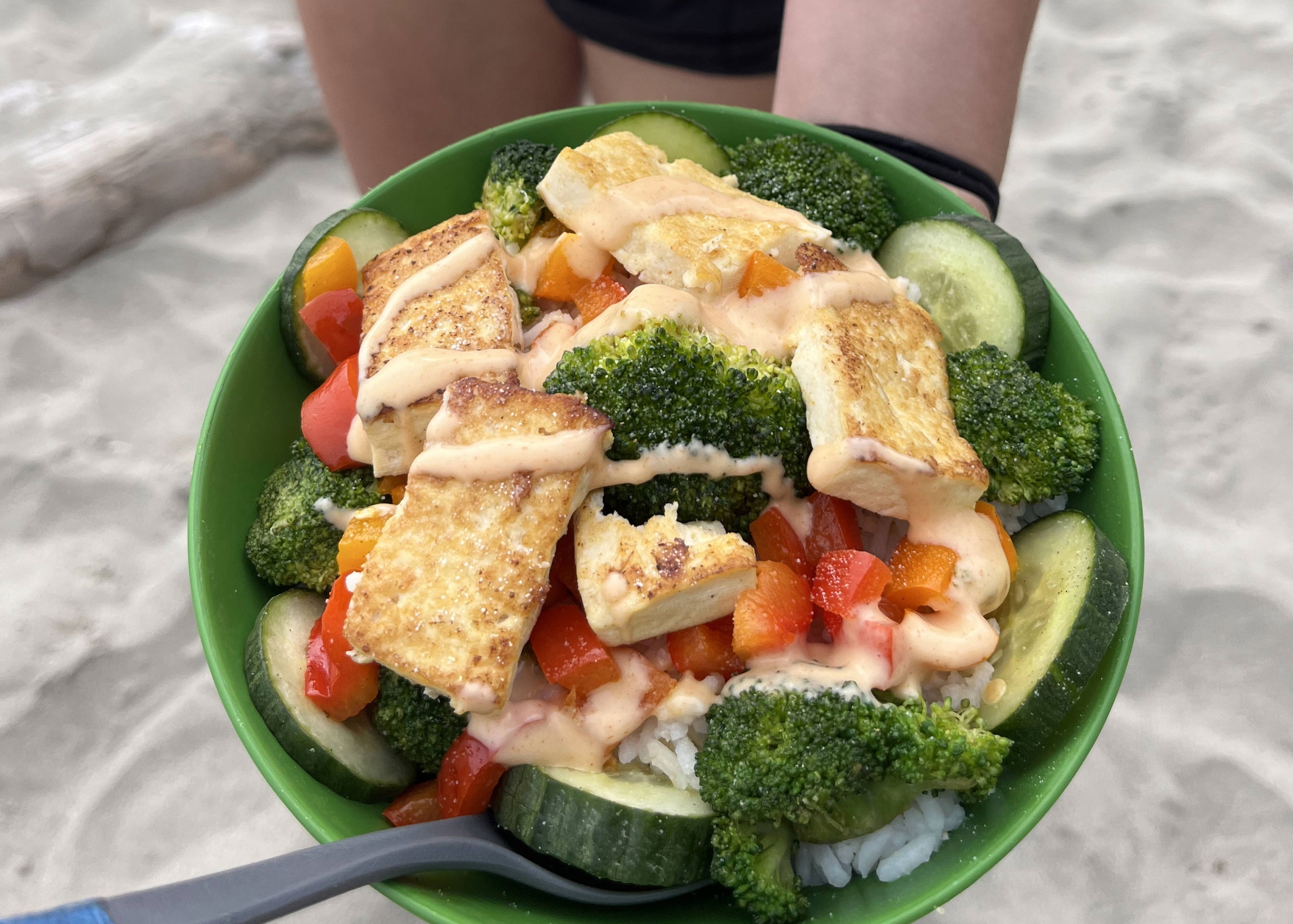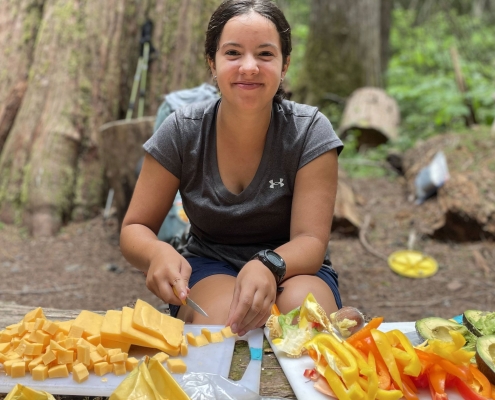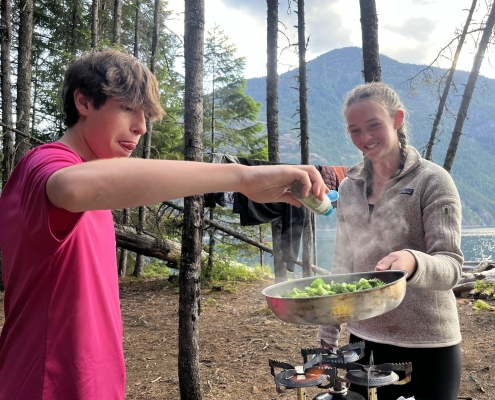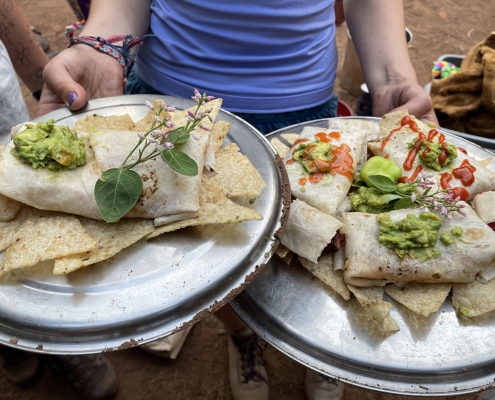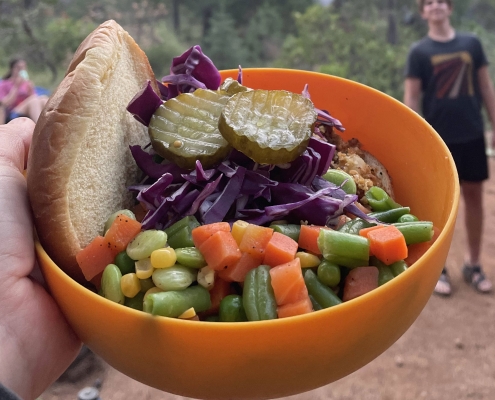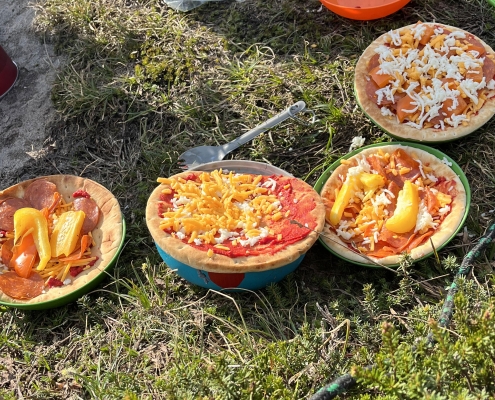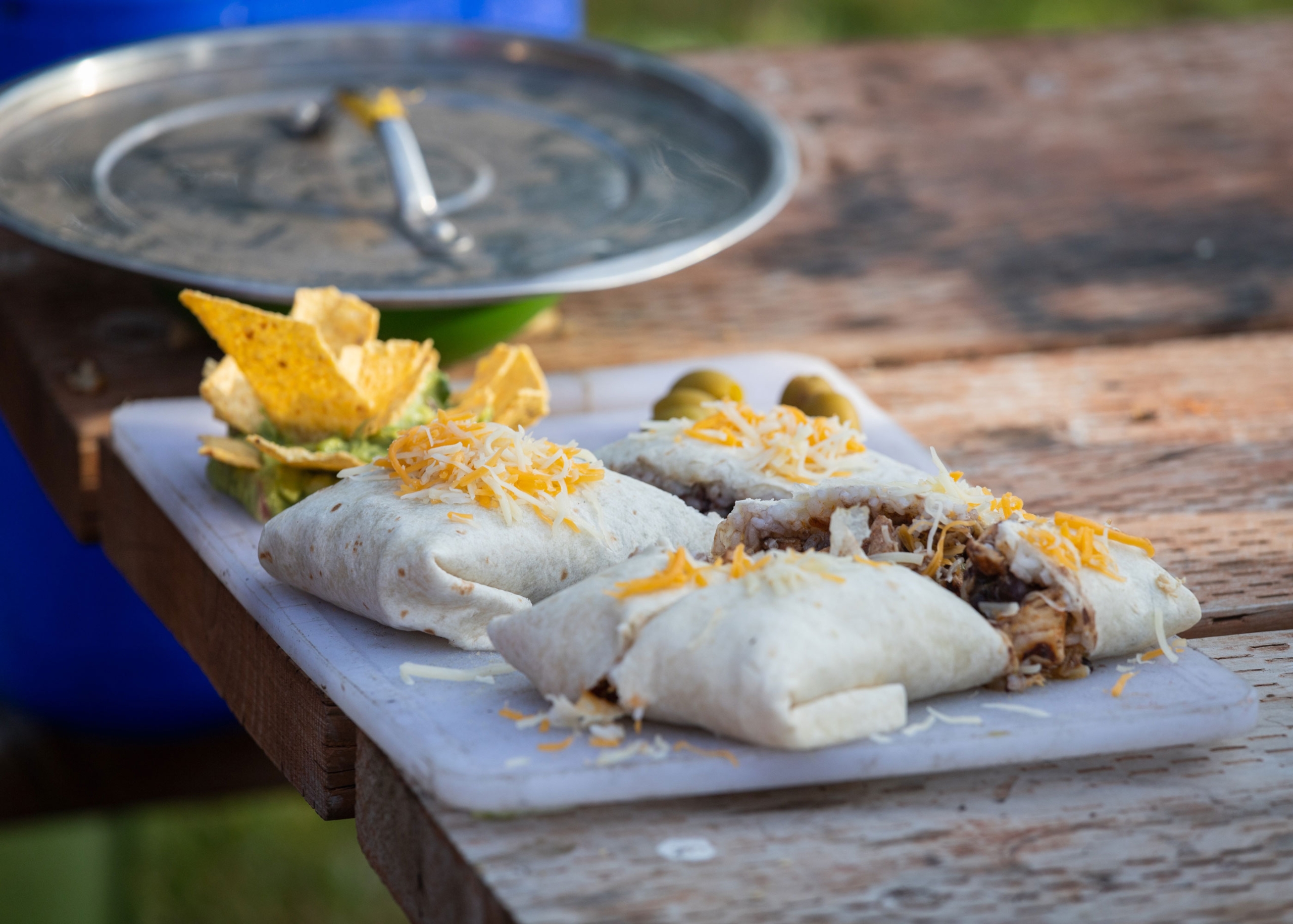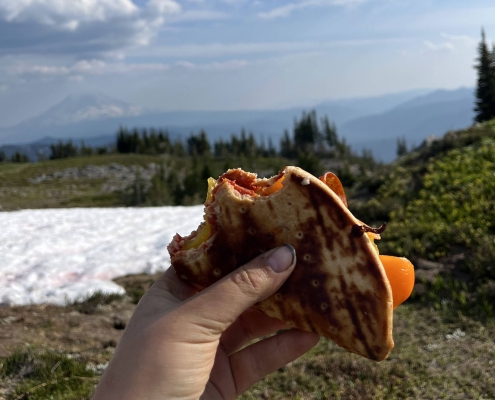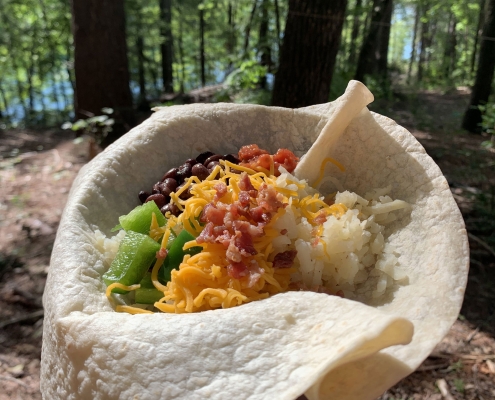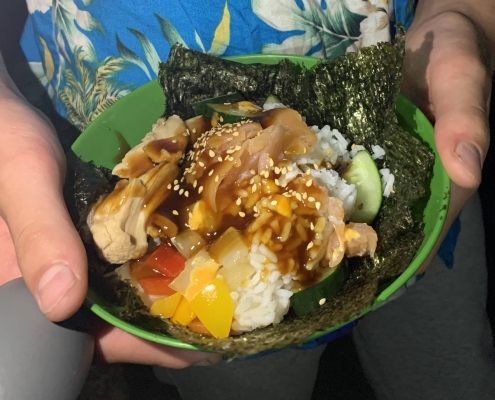Each day is a little different depending on the itinerary. Sometimes we stay at the same frontcountry campground a few days in a row, and on backcountry trips, we generally move camp every night. Students usually wake up between 6:30–7 am and start to prepare for the day. If the previous day was extra challenging or had an extra-early wake-up, students may get to sleep a little later. Three students (of the same gender) sleep in a four-person tent, and we switch up these tent groups throughout the trip.
Some students will make breakfast, while others will pack up tents and group gear. Another group will pack up food and clean dishes after breakfast. Instructors will be on hand to help out, though students will largely take over these responsibilities by the end.
Instructors will share what gear we’ll need for the day, and students will organize their personal belongings. If we’re on a backcountry trip (like overnight hiking), students will take a portion of shared group gear as well (like a pot, food, or pieces of the tent), along with their personal gear.
When our campsite has been packed up and swept for trash, groups will depart for their next destination, whether that’s the next campsite on trail, a rafting day on the river, or a logistics day!


